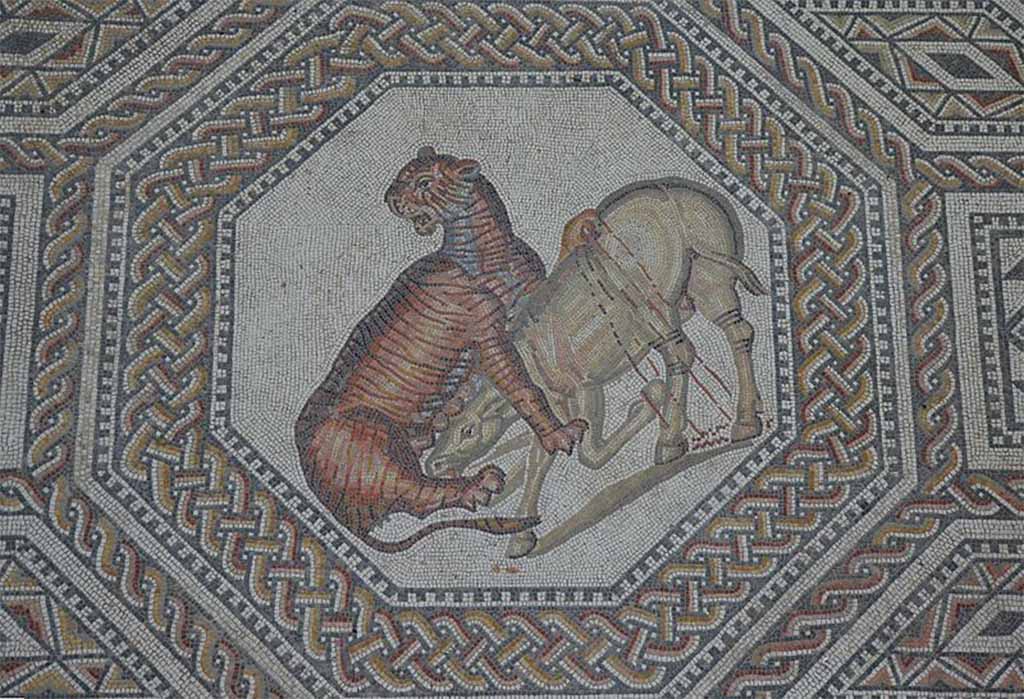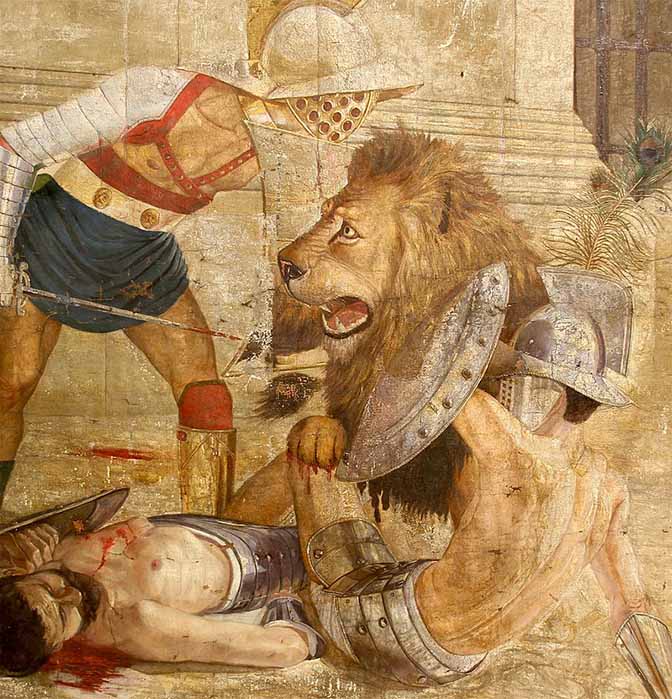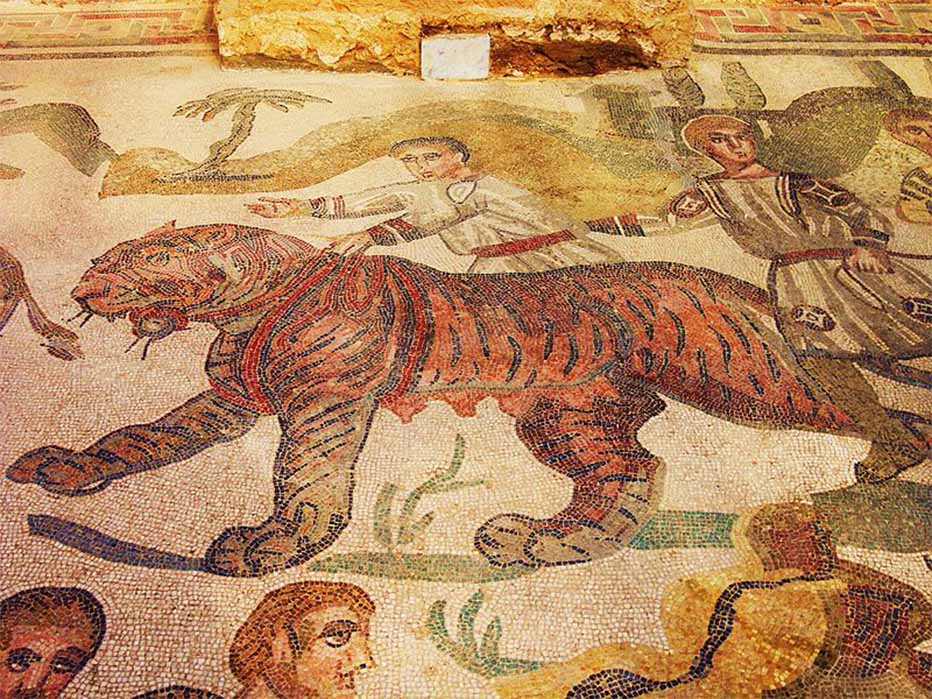
Big Cats For The Fat Cats Of Ancient Rome
Emperor Caracalla kept a favorite lion, Acinaces, as a pet, but not all Romans’ obsession for big feline predators boded well for the animals. “It is believed that a dying lion bites the earth and surrenders a tear upon its death” wrote the Roman author Pliny and he related how lions are terrified of chariot wheels and fire. He recommended that if they refuse to eat, tying a live monkey to a lion’s body worked it up to a frenzy and once the monkey’s blood was tasted, it restored their appetite. He also noted lion fat mixed with rose oil was used to moisturize the skin and keep the complexion clear – that of humans, not lions’.

A tiger against a wild ass, the gladiator mosaic at the Roman villa in Nennig, Germany (Public Domain)
Showing Off Feline Predators in the Arena
However, it was on the sands of the arena that the big cats of ancient Rome really left their mark - and blood - in history. The Emperor Augustus was always keen to show off anything peculiar that was brought to Rome. In 11 BC he did just that with a tiger, exhibiting the animal on a stage at the dedication of the Theatre of Marcellus, giving Rome its first sight of this magnificent animal.
Anyone with political aspirations knew supplying animals as entertainment for the Roman people was a sure way of swaying public opinion and big cats were just the species to attract the crowds to the amphitheaters. Male lions were especially prized and outdoing a rival with a supply of this animal improved one’s social status with the masses. In 93 BC Lucius Sulla was the first in Rome to showcase unchained lions in a combat between adult maned lions. As sponsor of the games at the Circus Maximus in 55 BC, Roman General Pompey outdid his rival Sulla with a display of 600 lions, of which 315 of them were crowned with glorious manes. Nine years later, Julius Caesar held a series of four triumphs and showed off 400 lions. If they were maned, Caesar would have outdone Pompey’s 315 males.

A Murmillo gladiator fights a big maned Barbary lion in the Colosseum in Rome during a condemnation of beasts (Public Domain)
Finding Big Cats
The logistics involved in supplying big cats to the Roman arenas was a nightmare. Lions and leopards were much easier to get hold of and reached Rome decades before the first tiger ever did. Since tigers were not nearly as common a sight as lions in Rome, academics believe they may not have been displayed at all outside of amphitheaters in the capital. Tigers were transported from India, Armenia and Hyrcania, such as the Caspian tiger of North Persia.
So how did one acquire these exotic animals for the games? Big cats were accepted instead of money when collecting tax; professional hunters from Africa or India were commissioned to hunt and capture them; or political contacts, such as a Roman governor in the provinces, were beseeched to assist with a supply of animals for the games.





